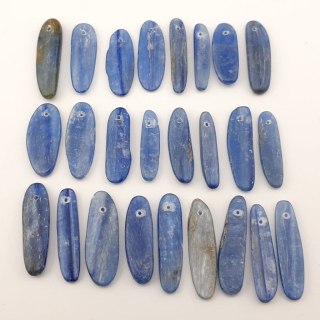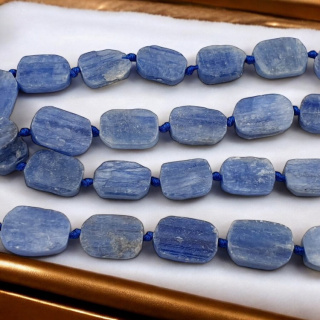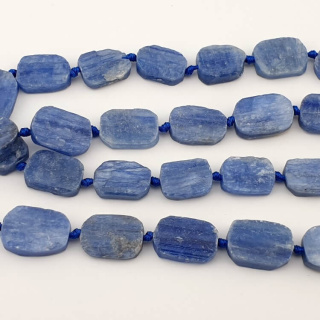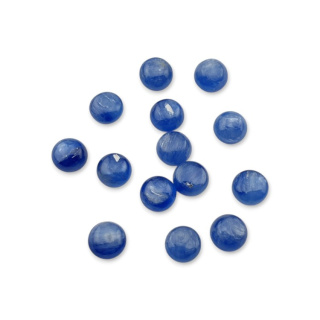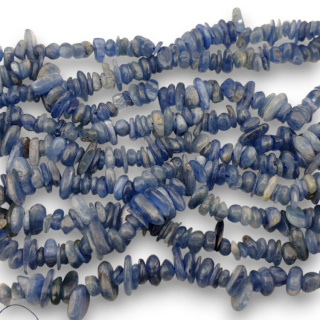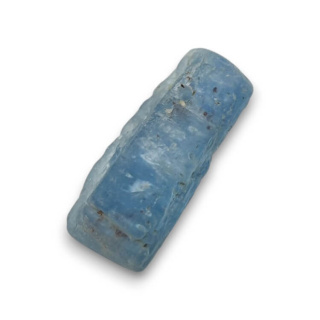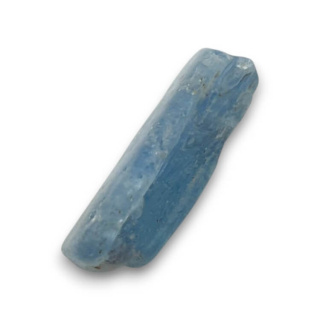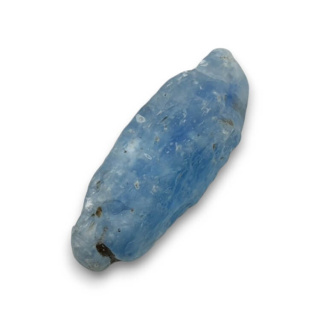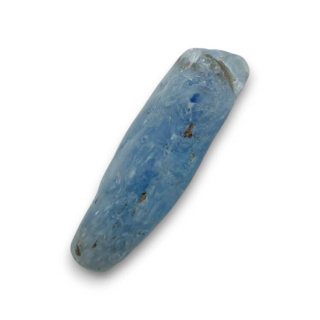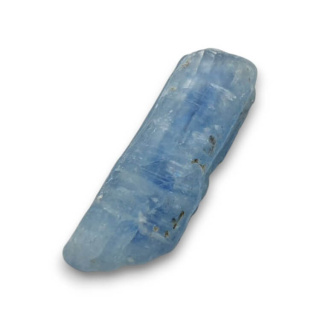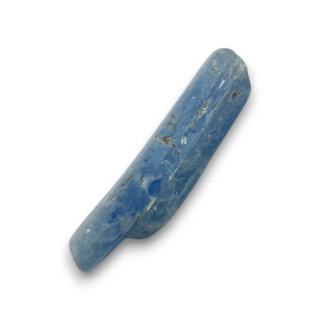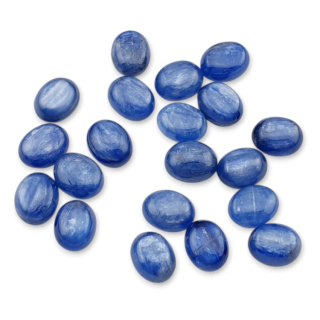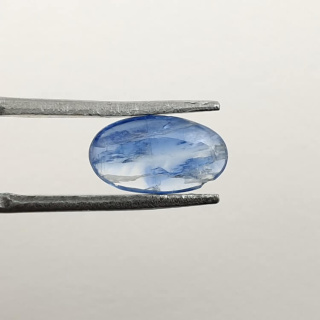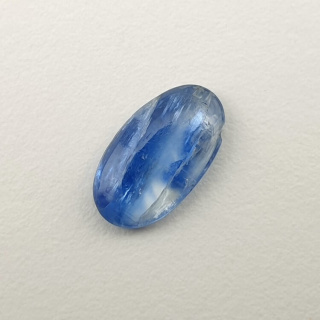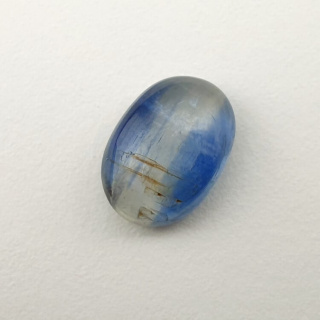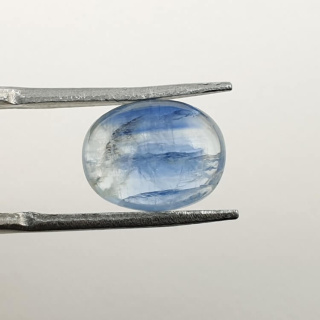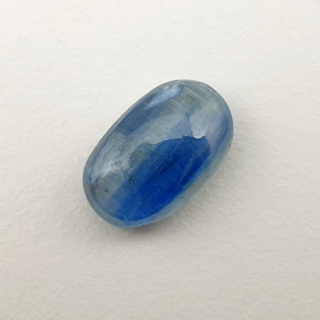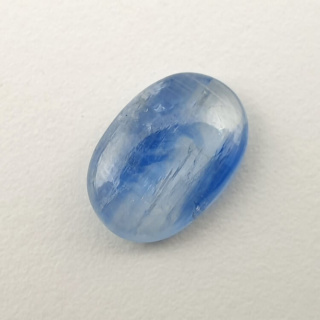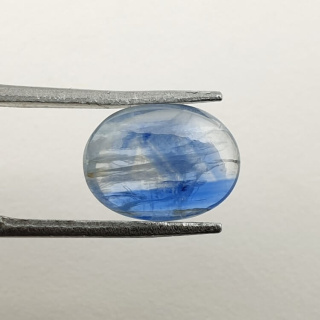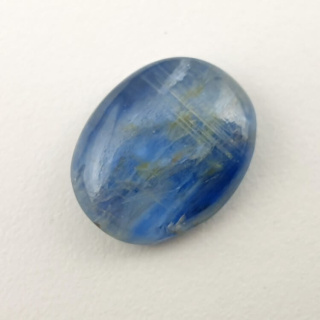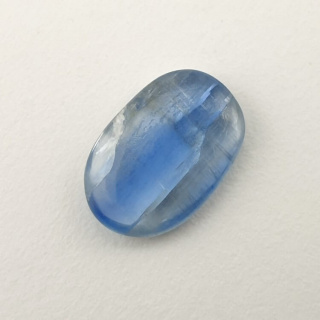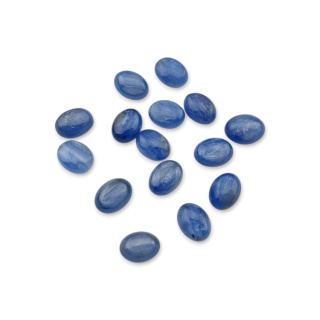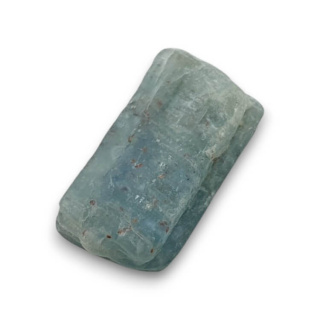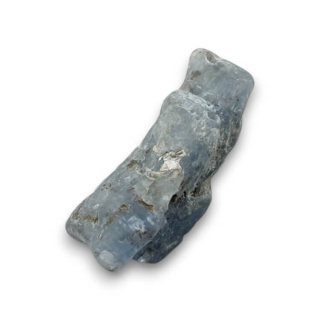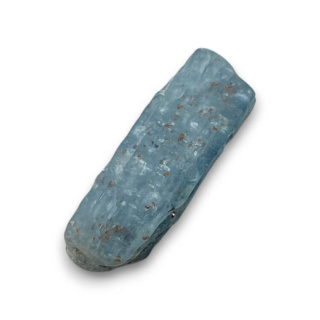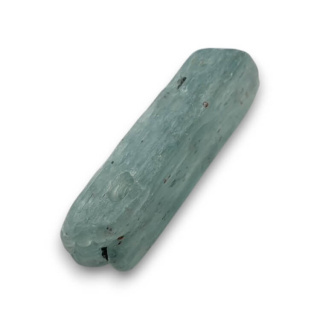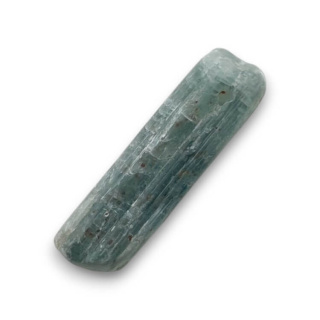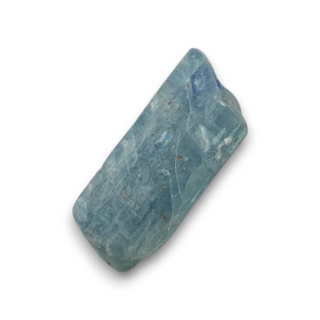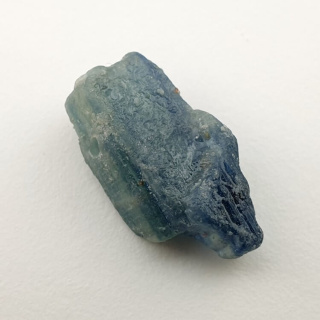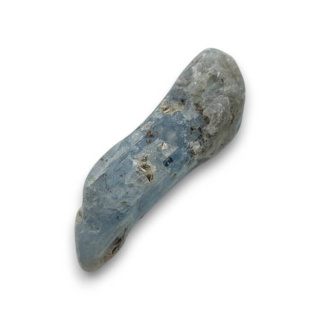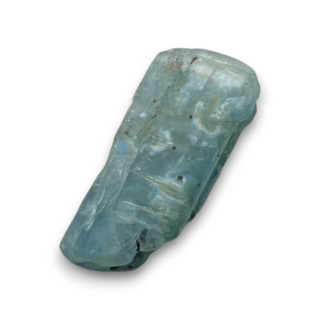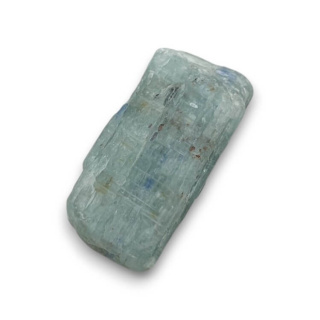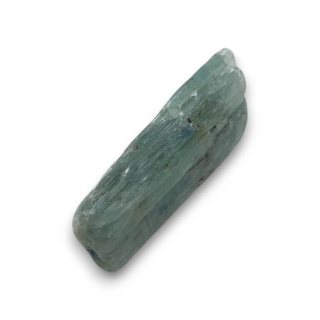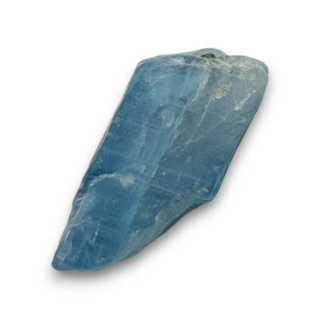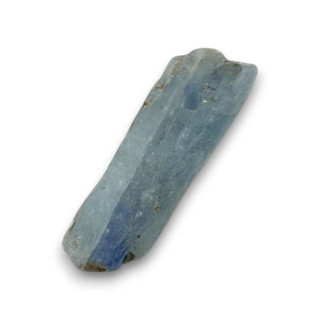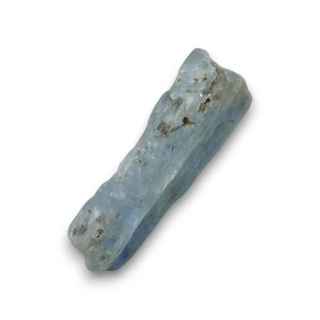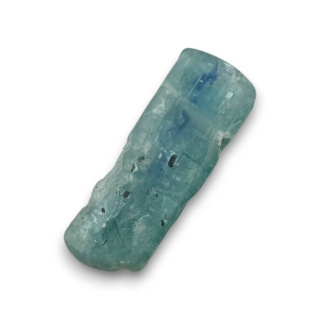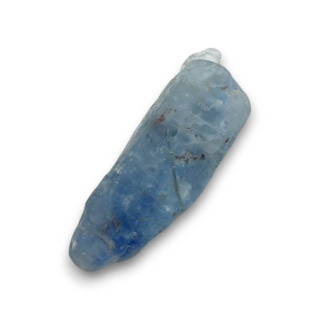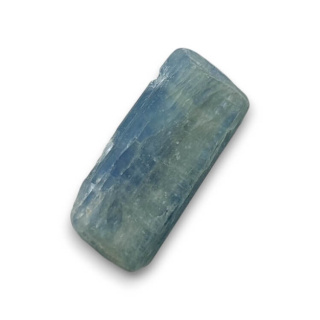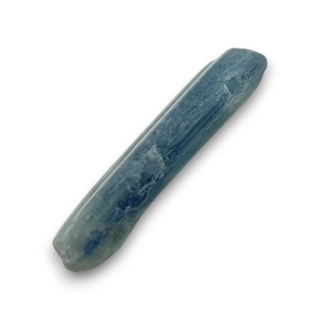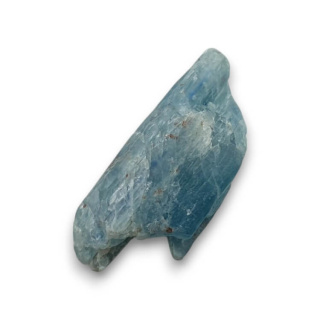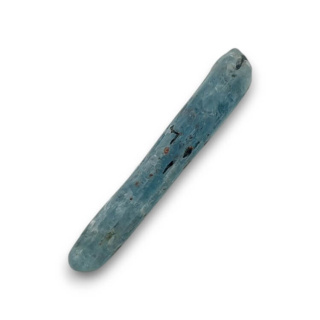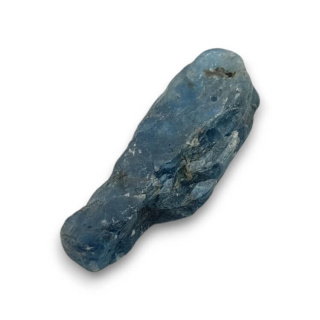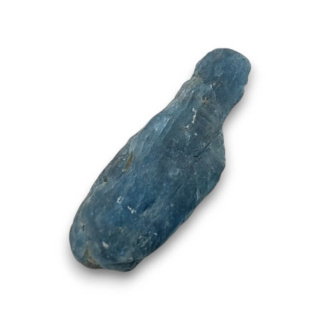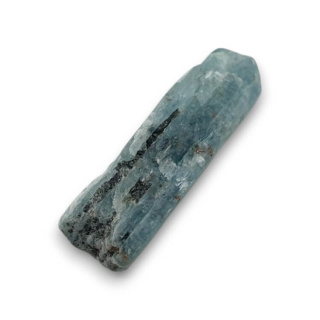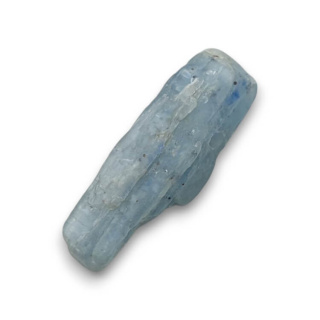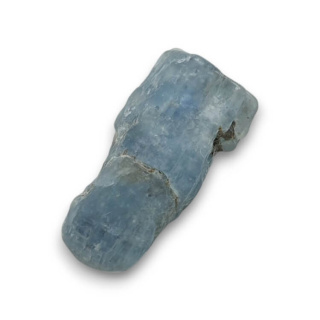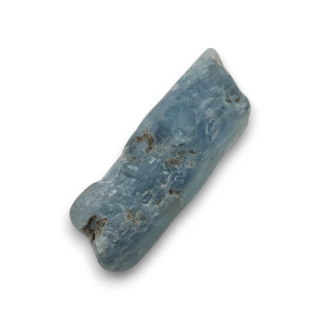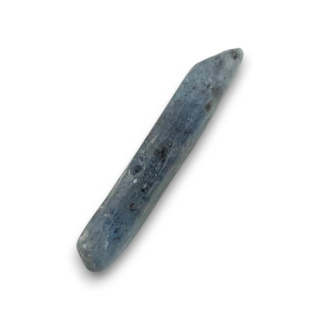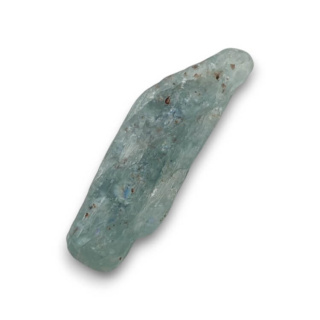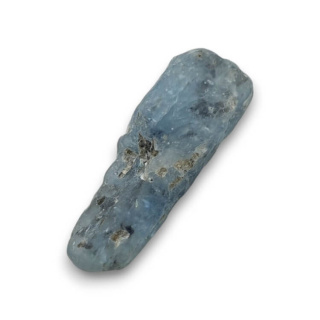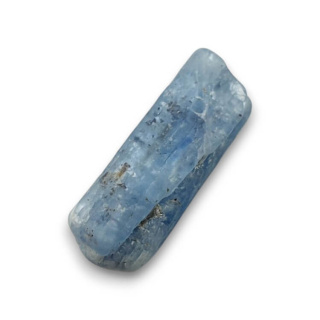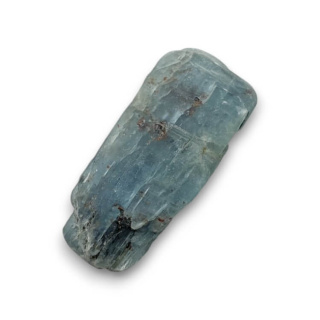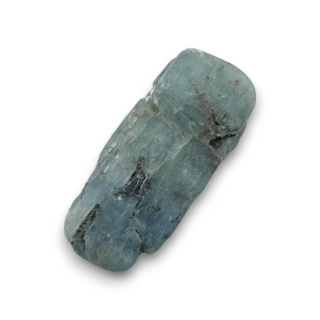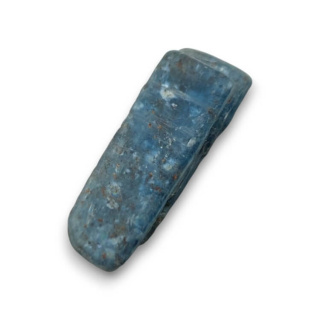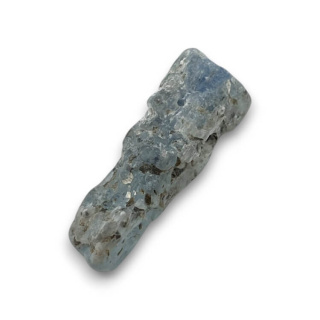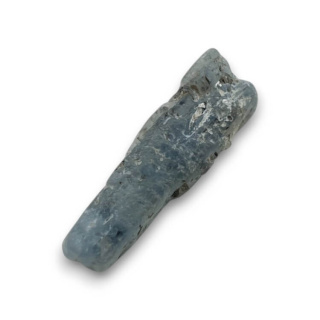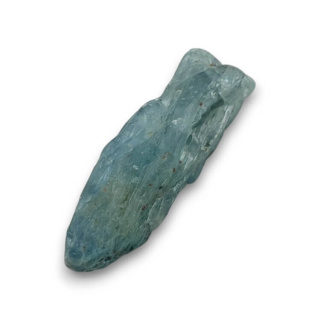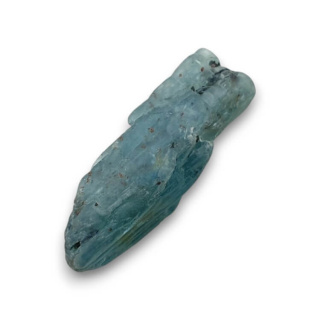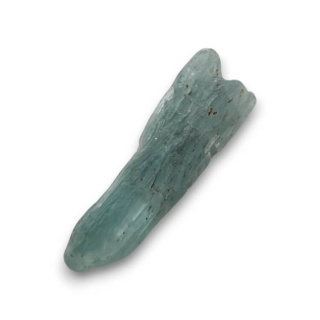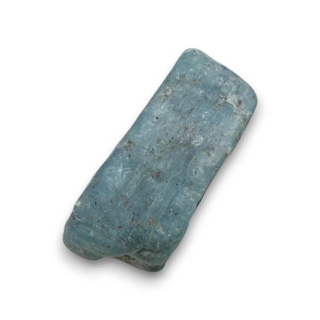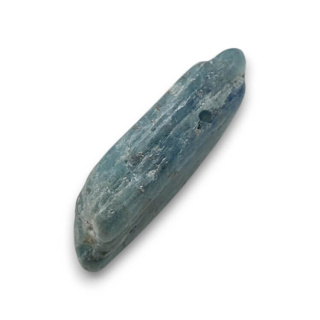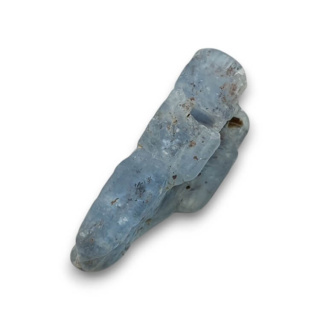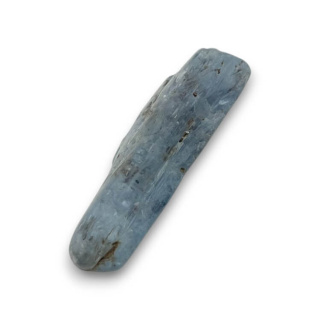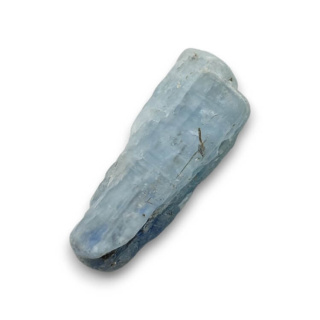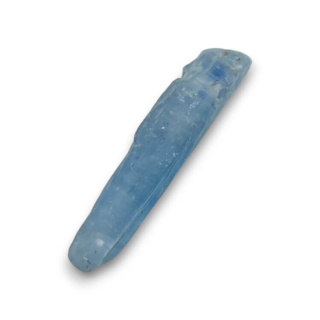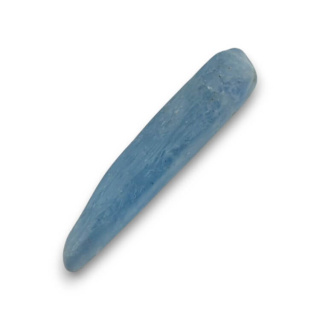Kyanite (dysthene, cyanite) is a semi-precious stone used in jewelry.
Number of products : 208What is kyanite?
Kyanite, also known as disthene or sapphire, is a mineral that is an aluminum silicate with the chemical formula Al2SiO5. It is a metamorphic mineral, which means that it is formed as a result of the transformation of other minerals during metamorphic processes, such as high pressure and temperature, which occur in the deeper layers of the earth's crust.
Dystene stone is known for its distinctive physical properties, such as its distinct hexagonal crystals with a blue or blue-green color. However, kyanite can also occur in other colors, such as white, colorless, gray, green, yellow, or pink.
One of the unique properties of disthene is its anisotropy, which means that it has different optical and physical properties in different crystal directions. This makes it useful in the jewelry industry and stonemasonry as a gemstone, although it is relatively soft compared to some other gemstones.
Where does kyanite come from and how is it formed?
Blue kyanite comes from various locations around the world and is mainly found in metamorphic rocks. Here is some information about the origin and formation of disthene:
Origin:
- Metamorphic rocks: Kyanite is often associated with specific types of metamorphic rocks, such as gneisses, mica schists, and graphite schists. It occurs in these rocks as a metamorphic mineral that is formed by the transformation of other minerals under high pressure and temperature. Mineral deposits: Kyanite is sometimes present in the form of large crystals in special mineral deposits. These deposits may also contain other minerals such as zircon, sillimanite, and staurolite.
- Formation process:The formation of kyanite is the result of metamorphism that occurs in the earth's crust under the right conditions. This process involves high pressure, high temperature, and prolonged exposure to these factors. As a result of metamorphism, source minerals such as aluminosilicates undergo transformation and recrystallization to form kyanite.
The main factors influencing the formation of kyanite are:
-
High pressure: Kyanite forms during metamorphic processes deep beneath the Earth's surface, where higher pressures prevail.
-
High temperature: High temperature is also an important factor contributing to the transformation of minerals into kyanite.
It is worth noting that blue kyanite is one of the minerals that are particularly useful to geologists for determining the metamorphic conditions under which rocks have been transformed, as its presence or absence and the orientation of its crystals can provide important information on this subject.
What are the main physical and chemical properties of kyanite?
The main properties of kyanite are:
Physical properties of kyanite:
- Appearance: Kyanite occurs as crystalline hexagonal crystals with distinct faces and edges. These crystals can vary in size but are usually relatively small compared to some other minerals.
- Color: The blue color of kyanite is its most distinctive feature, but it can also occur in other colors such as white, colorless, gray, green, yellow, or pink.
- Hardness: Kyanite has a hardness of approximately 4.5-5.5 on the Mohs hardness scale, making it relatively soft compared to many other gemstones.
- Transparency: Kyanite is often transparent, meaning that it allows light to pass through it, although it can also occur in massive or opaque forms.
- Anisotropy: Kyanite is an anisotropic mineral, which means that it has different optical and physical properties in different crystal directions. This is particularly evident in its optical properties when viewed through a crystal cross-section.
Chemical properties of kyanite:
- Chemical composition: Kyanite is an aluminum silicate with the chemical formula Al2SiO5. This means that it consists mainly of atoms of aluminum (Al), silicon (Si), and oxygen (O).
- Chemical stability: Kyanite is a relatively stable chemical mineral, but it can undergo transformations as a result of prolonged exposure to acids or other aggressive chemicals.
- Solubility: Kyanite is slightly soluble in water and most common chemicals, making it relatively resistant to environmental influences.
These properties make kyanite an interesting mineral from both a geological and jewelry perspective, as well as for other industrial applications.
Where in the world can significant amounts of kyanite be found?
Kyanite is found all over the world, but significant quantities of this mineral are not found everywhere. The largest and most important deposits of kyanite are found in the following regions:
- India: India is one of the world's main sources of kyanite. This mineral is found there in large quantities, especially in the states of Bihar, Jharkhand, and Orissa. India: India is one of the world's main sources of kyanite. This mineral is found there in large quantities, especially in the states of Bihar, Jharkhand, and Orissa. Brazil: Brazil is another country where significant deposits of kyanite can be found. Kyanite is mined in various states of Brazil, such as Minas Gerais and Bahia. United States: In the United States, blue kyanite is mined mainly in the state of Virginia, where deposits are known to exist. Australia: In Australia, kyanite is found in deposits in the state of New South Wales. Canada: In Canada, kyanite is found in deposits in the province of Quebec.
- United States: In the United States, blue kyanite is mined mainly in Virginia, where deposits of this mineral are known to exist.
- Nepal: Kyanite is also found in Nepal, where it is mined in certain regions of the country.
- Russia: Russia has kyanite deposits in some regions, such as the Kola Peninsula in the north of the country.
- Mexico: Kyanite is mined in Mexico, especially in the state of Baja California.
What are the main uses of kyanite in industry and jewelry?
Natural kyanite has a variety of uses in both industry and jewelry, although due to its specific properties, it is not as widely used as some other precious minerals. Here are the main uses of natural kyanite:
1. Jewelry: The blue color of kyanite is the reason it is used as an element in jewelry such as rings, necklaces, earrings, and bracelets. Although it is relatively soft compared to other gemstones, its beautiful color and unique optical properties make it highly prized by jewelers.
2. Collectible stones: Natural kyanite may also be sought after by mineral and gemstone collectors due to its rarity and attractive appearance.
3. Ceramic industry: Natural kyanite is used in the ceramics industry as a raw material for the production of high-temperature refractory materials such as firebricks, heat-resistant vessels, and thermal insulation. Its high-temperature resistance makes it an ideal component for these applications.
4. Metallurgical industry: Natural kyanite stone can be used as a component in the production of refractory materials for metallurgy, where high temperature resistance is essential for metal processing.
5. Geology and scientific research: Natural kyanite is an important mineral for geologists and scientists studying metamorphic rocks, as its presence or absence and the orientation of its crystals can provide valuable information about the metamorphic conditions under which the rocks were transformed.
6. Energy jewelry: Some believe that kyanite has energetic properties and is used in energy jewelry for protection, balance, and spiritual growth.
It is worth noting that although kyanite disthene has industrial applications, it is relatively rare in jewelry compared to other gemstones such as diamonds, sapphires, and emeralds. However, for those looking for unique blue gemstones, kyanite disthene may be an attractive option.
Kyanite, like many other gemstones and minerals, is sometimes attributed with magical and spiritual properties in various belief systems and esoteric practices. However, it is important to understand that these properties are often based on beliefs and traditions rather than scientific evidence. Here are some of the magical and spiritual properties that are sometimes attributed to kyanite:
- Protection and purification: Kyanite is often considered a protective stone that can help purify negative energy from the environment and protect against negative influences. Some believe that holding kyanite in your hand or wearing it as jewelry can strengthen your aura and ward off negative influences.
- Balance and harmony: Kyanite is sometimes credited with the ability to help achieve balance and harmony in life. It is said to be a stone that helps you understand and transform your emotions, which can lead to greater peace and self-understanding.
- Intuition and clairvoyance: Some believe that kyanite can support the development of intuition and clairvoyance. It is associated with the third eye (chakra), which is related to spiritual perception and the perception of subtle energies.
- Communication and self-expression: Kyanite can be used to enhance communication and self-expression. It is said to help you express your thoughts and feelings openly and truthfully.
- Chakra work: Kyanite is sometimes used for chakra work, especially with the throat chakra, which is associated with communication and self-expression. It is said to help unblock this chakra and allow for authentic self-expression.
- Dreams and developing dream abilities: Some believe that kyanite can help unlock the ability to lucid dream and work with dreams.
The magical properties of gemstones and minerals are often subjective and depend on personal beliefs and practices. Those interested in working with kyanite for magical and spiritual purposes should approach it with an open mind and consider these properties in the context of their own beliefs and experiences.
What is the connection between kyanite and the chakras and zodiac signs?
Kyanite is sometimes associated with specific chakras and zodiac signs, especially in the context of esoteric and spiritual practices. Here is some information on this topic:
1. Connection to chakras:
Throat chakra (communication chakra): Kyanite is often associated with the throat chakra, which is located in the neck area and is related to communication, self-expression, and creating harmony in interpersonal relationships. It is believed that kyanite can help unblock and strengthen the energy of this chakra, which can contribute to improving communication and self-expression.
2. Connection to zodiac signs:
- Taurus: Some attribute beneficial properties to kyanite for those born under the sign of Taurus. Kyanite is believed to help Taureans deal with their emotions and achieve balance in their lives.
- Cancer: Kyanite is often associated with the zodiac sign Cancer. Some believe that kyanite may be beneficial for those born under the sign of Cancer, helping them to deal with emotional challenges and create harmony in their family and home life, which is important for Cancer.
- Sagittarius: Kyanite is also sometimes associated with the zodiac sign Sagittarius. It is believed to support the development of intuition and help Sagittarians in their spiritual growth.
However, it is important to note that these connections between kyanite, chakras, and zodiac signs are more related to esoteric practices and beliefs than to scientific evidence. Gemstones such as kyanite are often interpreted in different ways depending on tradition and beliefs, so the meaning attributed to them may vary depending on the source of information or culture. Those interested in working with kyanite for its effects on the chakras or zodiac signs should approach the subject with an open mind and be aware that it is more a matter of belief and spiritual practice than science.
![[{[item.product.name]}]]([{[item.product.photo.url]}] 75w)

